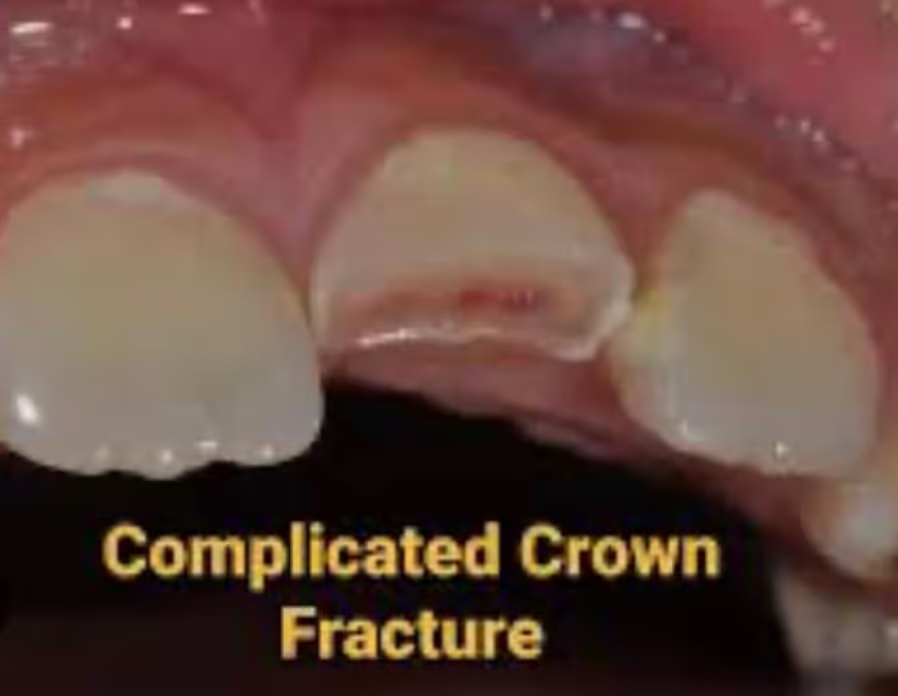ROOT CANALS IN PERMANENT FRONT TEETH ON CHILDREN
This question comes up so often for our patients that we decided it deserved a blog of it’s own. The question is… what to do when a child breaks their permanent front tooth to the nerve, gets a cavity in the permanent front teeth to the nerve, or kills a front permanent tooth from trauma? So I’m going to give you my honest advice.
It is critically important for children to keep their permanent incisors if those situations arise, even if it means opting for root canals, until they are fully grown. This is especially true for boys, who will not complete their growth until around age 22, but honestly, research is showing that waiting until the late 20’s is even better. Girls are usually finished growing by age 16, and research is showing that waiting until the mid 20’s is better for them. Although root canals on young teeth can be a challenging decision for parents, retaining these front teeth through adolescence and young adulthood plays an essential role in ensuring proper bone structure, facial symmetry, and long-term oral health.
Bone Preservation and Growth
The permanent incisors, or front teeth, act as essential anchors for maintaining the bone structure in a child’s jaw. When teeth are lost prematurely, the bone in that area tends to resorb, or deteriorate, due to lack of stimulation from the tooth root. This process of bone loss begins almost immediately after a tooth is removed and becomes increasingly pronounced over time. In a growing child, where the bones of the face and jaw are still developing, this loss can severely affect the entire area. Once bone loss occurs, reconstructing that area is extremely challenging (and often impossible), even with advanced bone grafting techniques. Many cases show that grafted bone cannot fully restore the original volume and structure that natural teeth would have maintained. For a young person, the loss of bone from an extracted tooth can have permanent effects that significantly impact their dental and facial health throughout their life.
The experience of individuals who have lost their incisors early highlights these challenges. This subject hits close to home for my family. My husband lost his central and lateral incisors at age 13 and suffered considerable bone loss in that region over the years. By the time he was 22, the bone in that area had become “knife-edged” and insufficient for ideal restoration, despite multiple attempts to repair it through surgeries. His experience demonstrates how difficult it can be to restore missing bone in the front teeth, often leaving visible differences and leading to a compromised esthetic result. His story underscores the importance of preserving the front teeth, if possible, during childhood to avoid these long-term structural and cosmetic issues.
The Role of Incisors in Facial Symmetry and Development
The presence of front teeth is also crucial for facial symmetry and proper growth of the jaw and skull. The front teeth serve as support structures, helping guide the development of the facial bones. Without these teeth, the natural growth pattern of the jaw can be disrupted, potentially leading to asymmetries and alignment issues. If a child loses an incisor prematurely, the surrounding teeth may shift, the bite can collapse on that side, and facial symmetry can be affected. This can impact not only the appearance but also the function of the jaw, leading to problems with chewing and even with the airway.
The development of the airway is closely related to the structure of the jaw and alignment of the teeth. The positioning of the front teeth contributes to a proper airway, and early loss of these teeth can interfere with this development, sometimes leading to compromised breathing patterns. Consequently, preserving front teeth during the growth years is essential to ensure an optimal airway and support a well-balanced bite.
Considerations and Alternatives
While a root canal is not an ideal long-term solution, it is the best choice for a young individual to preserve the tooth for as long as possible, supporting the bone and jaw structure throughout the critical years of development. Though root canal treatments carry risks, including the potential for re-infection, these risks often outweigh the much more severe long-term consequences of premature tooth loss in a growing child. In cases where infection or decay is a concern, working with a biologically oriented dentist who understands growth patterns, airway health, and the importance of bone preservation can make a significant difference in managing these risks.
Orthodontic strategies, such as palatal expansion, are often employed to support proper bone development in children missing permanent teeth. For instance, orthodontists may use appliances like a MARPE (mini-screw assisted rapid palatal expander) to encourage growth of the jaw, creating sufficient space for future implants while maintaining bone integrity. These treatments aim to give the child every chance to develop a stable jaw structure that can eventually support natural-looking implants or crowns in adulthood, if necessary.
Long-Term Planning and Financial Preparation
Choosing to retain a child’s front teeth, even if it means they will need root canals for the next 10+ years, allows time to plan for the best long-term solutions. With up to a decade or more to consider restorative options, parents can financially and logistically prepare for future dental implants or crowns. This advance preparation provides the opportunity to seek out high-quality treatments that offer the best esthetic and functional results. Furthermore, retaining the natural teeth allows parents and healthcare providers time to ensure that the child’s airway and bite are optimized over the years, which can prevent complications that might arise if these aspects were not addressed.
Conclusion
In summary, preserving a child’s permanent incisors, even through root canals if necessary, is crucial for maintaining bone integrity, facial symmetry, airway health, and long-term dental stability. Removing these teeth prematurely risks severe, lifelong consequences that are difficult and sometimes impossible to correct fully. A child’s face, jaw, and airway continue to grow and develop throughout adolescence, and the natural teeth provide the best support for this process. Working with knowledgeable professionals who prioritize holistic, biologically centered dental care can make a profound difference in protecting a child’s future dental and facial health. For many families, the decision to preserve these teeth is an investment in the child’s overall well-being, setting a foundation for a lifetime of better health, confidence, and comfort.
I hope that answers your questions and explains why even a biological dentist will choose root canal therapy for permanent front teeth on children who have not yet finished growing.



